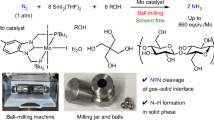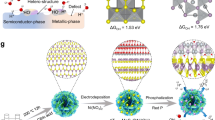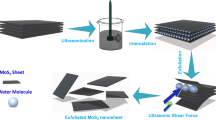Abstract
TREATING molybdenum wires of 0·2 mm. in a stationary manner by passing electric current through them and testing the behaviour of the wires under tensile stress, we have found that specimens heated in nitrogen are of quite a different character from those treated in hydrogen, argon or in vacuo. The yield point (in general, at the yield point of the wire plastic deformation of the metal commences) and the elongation of the wire in particular are very markedly influenced by nitrogen. Fig. 1 shows the load-extension curves of wires treated in nitrogen, the arrows indicating the yield point of the wire.
This is a preview of subscription content, access via your institution
Access options
Subscribe to this journal
Receive 51 print issues and online access
$199.00 per year
only $3.90 per issue
Buy this article
- Purchase on SpringerLink
- Instant access to full article PDF
Prices may be subject to local taxes which are calculated during checkout
Similar content being viewed by others
References
C. J. Smithells and C. E. Ransley state that nitrogen diffuses through molybdenum (Proc. Roy. Soc. London, 152 (1935).
W. Frankenburger, ” Zum heutigen Stand der Theorie der Ammoniak-Katalyse”. Z. Elektrochem., No. 1, 2, 5 (1933).
Author information
Authors and Affiliations
Rights and permissions
About this article
Cite this article
TÚRY, P., KRAUSZ, S. Effect of Molecular Nitrogen on Molybdenum at High Temperatures. Nature 138, 331 (1936). https://doi.org/10.1038/138331a0
Issue date:
DOI: https://doi.org/10.1038/138331a0
This article is cited by
-
Effects of Oxygen, Nitrogen, and Carbon on The Ductility of Cast Molybdenum
JOM (1956)
-
Tensile Deformation of Molybdenum as a function of Temperature and Strain Rate
JOM (1956)
-
Die Neuen Sterne
Die Naturwissenschaften (1940)
-
Distortion and Yield Point of Molybdenum
Nature (1937)
-
Distortion of Iron and Molybdenum
Nature (1936)



